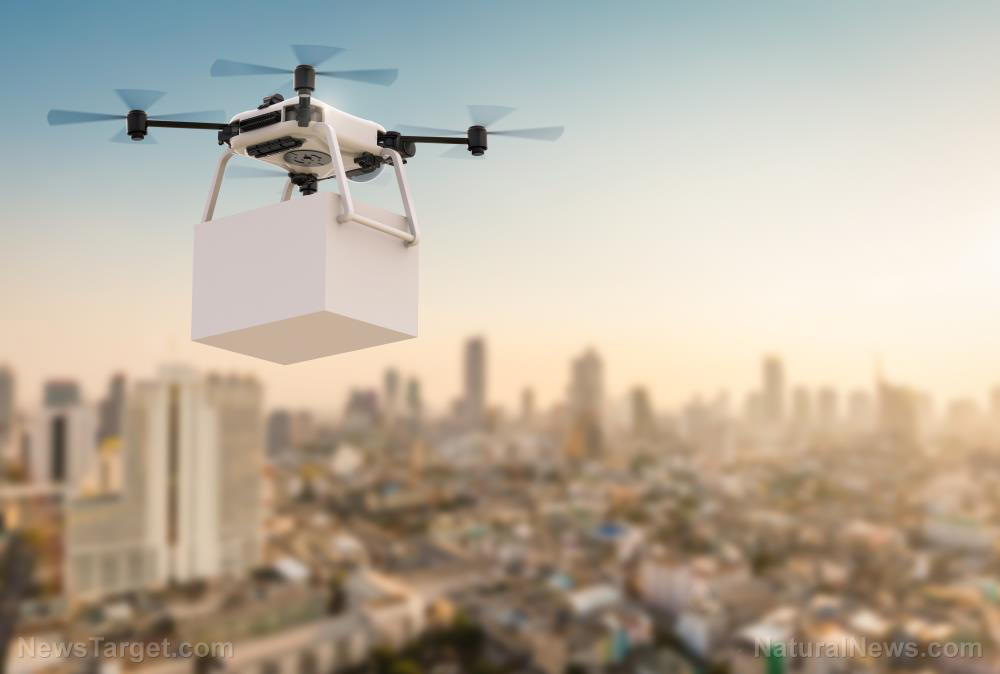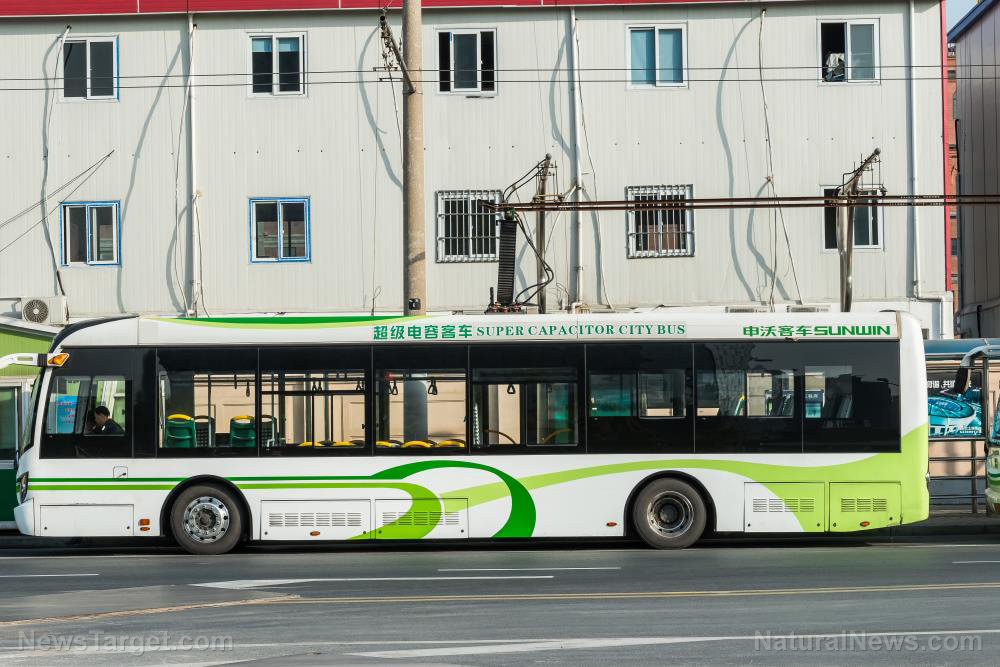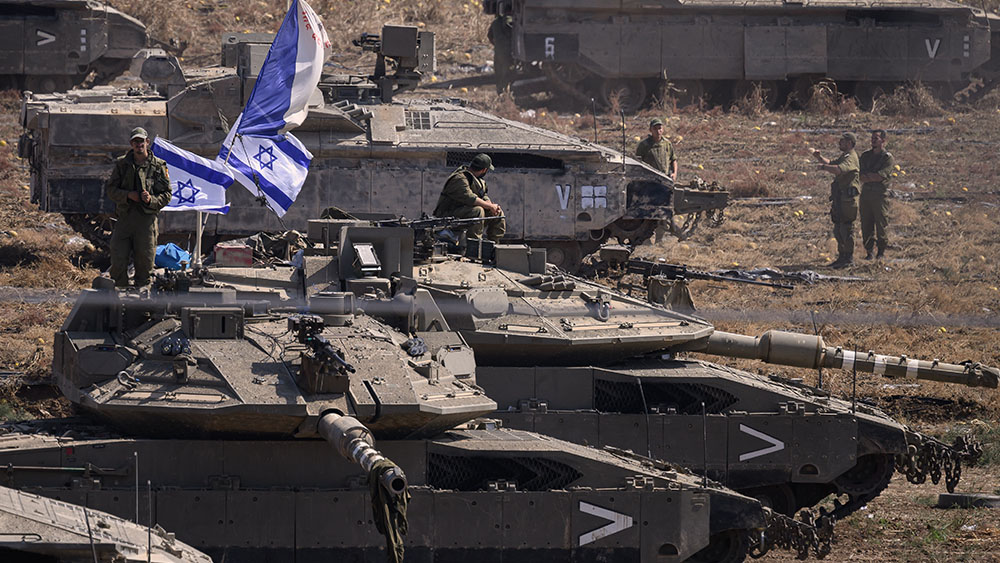MEGA DEATH: DoD announces pursuit of modern nuclear gravity bomb with 24x the power of WWII bombs
11/08/2023 / By Belle Carter

The United States Department of Defense (DoD) recently announced that President Joe Biden’s regime is pursuing a modern variant of a nuclear gravity bomb. It is now urging Congress to authorize the production of the atomic warhead, which will surpass the capabilities of the bombs employed in World War II.
According to the Pentagon, the 13th version of the B61 line of nuclear gravity bombs will have a maximum yield of 360 kilotons, which is 24 times more powerful than the bomb dropped on Hiroshima and Nagasaki, Japan, that killed 80,000 civilians at one location and 40,000 at another. “That’ll give you a good perspective of the dynamics of this weapon [B61-13], and how far we’ve come technologically to advancing our nuclear armaments,” said Donald Bramer, a former naval intelligence officer.
The DoD’s release said that the Department of Energy‘s National Nuclear Security Administration (NNSA) would produce the B61-13. “The decision to pursue this capability, which was undertaken in close collaboration with the NNSA, responds to the demands of a rapidly evolving security environment as described in the 2022 Nuclear Posture Review,” it further stated. (Related: Former Pentagon official warns via NATO website: West should prepare for NUCLEAR WAR.)
Assistant Secretary of Defense for Space Policy John Plumb pointed out in the statement that the announcement is reflective of a changing security environment and growing threats from potential adversaries as the U.S. has a responsibility to “assess and field the capabilities to credibly deter and, if necessary, respond to strategic attacks and assure our allies.” The release also stated that the new bomb would be deliverable by modern aircraft, including the $692 million B-21 Raider stealth bomber, which is currently in development. It was said to strengthen the deterrence of adversaries and assure allies and partners by providing the president with additional options against harder and large-area military targets. It would also replace some of the B61-7s in the current nuclear stockpile and have a yield similar to the B61-7, which is higher than that of the B61-12.
Production of what is expected to be a small number of B61-13s will not increase the overall number of nuclear weapons in the U.S. arsenal as others will be retired. The U.S. currently has around 3,700 nuclear warheads, of which 1,419 are deployed.
Meanwhile, earlier this month, on Capitol Hill, the Senate Armed Services Committee emphasized the nation’s nuclear strategy. Leaders from both sides of the aisle expressed concerns about persistent threats from adversaries such as Russia, which recently withdrew from a nuclear threat ban treaty, and North Korea, which continues to conduct numerous weapons tests. “This is as serious of a topic as we will hear about this year,” said Republican Mississippi Sen. Roger Wicker. “To prevent war and keep the peace, it is incumbent upon legislators to commit today to a program of sustained innovation and investment. This is the only way we can reclaim lost ground.”
A few weeks ago, the NNSA said that a team conducted an underground chemical explosion at a test site in Nevada. This was claimed to be aimed at “improving America’s ability to detect nuclear explosions worldwide.” “It is time to begin making the national defense investments required to deter the conflicts looming ahead,” Wicker insisted.
Biden in 2020: Horrors of Hiroshima and Nagasaki will never happen again
Back in the 2020 presidential election campaign, Biden promised to “bring us closer to a world without nuclear weapons so that the horrors of Hiroshima and Nagasaki are never repeated.” And yet, his administration is fully involved in developing the most ambitious nuclear weapons effort since World War II.
Reports said that he is squandering more than $750 billion over the next decade to revamp nearly every part of its nuclear defenses because some systems and parts are more than 50 years old. At Los Alamos National Laboratory in New Mexico, 3,300 workers have been hired in the last two years, with the workforce now numbering more than 17,000. They are producing plutonium cores which are key components for nuclear weapons.
Congressman Mike Rogers (R-Al), chairman of the House Armed Services Committee, welcomed the proposal but said it was a “modest step in the right direction.” “The B61-13 is not a long-term solution but it will provide our commanders with more flexibility against these target sets. Dramatic transformation of our deterrent posture, not incremental or piecemeal changes, is required to address this threat,” he said.
NuclearWeapons.news has more stories related to the development of nuclear weapons in anticipation of imminent conflicts with Russia, China and other countries.
Sources for this article include:
Submit a correction >>
Tagged Under:
B-21 Raider, B61-13, big government, conspiracy, Dangerous, dod, future tech, Hiroshima, inventions, Joe Biden, military technology, nagasaki, national defense, national security, NNSA, nuclear gravity bomb, Nuclear Posture Review, nuclear war, nuclear weapons, Pentagon, weapons technology, White House, WWII
This article may contain statements that reflect the opinion of the author
RECENT NEWS & ARTICLES
COPYRIGHT © 2017 INVENTIONS NEWS




















